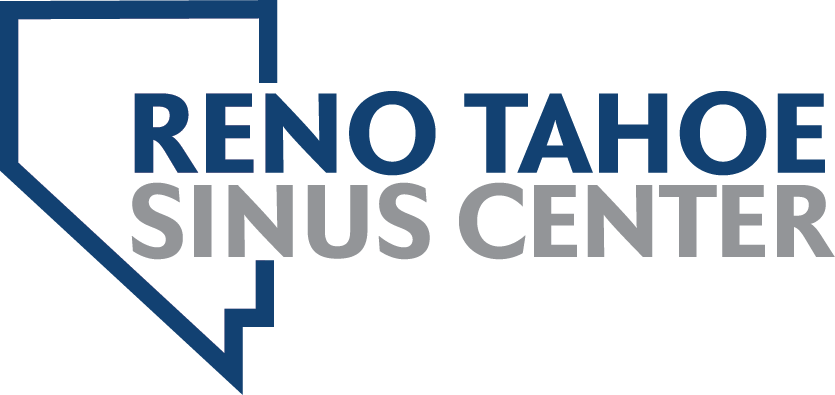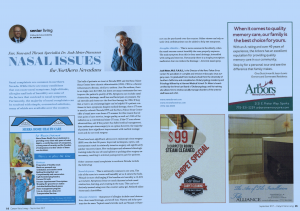Nasal complaints are common in northern Nevada. While there are many conditions that can cause nasal symptoms, high altitude, allergies and lack of humidity are some of the factors that can lead to nasal symptoms. Fortunately the majority of nasal complaints can be resolved with simple, economical solutions, many of which are available over the counter.
The bulk of patients we treat at Nevada ENT and the Reno Tahoe Sinus Center have chronic rhinosinusitis (CRS). CRS is a chronic inflammatory disease, similar to asthma. Just like asthma there is no single cure for CRS, but there are many treatments that can improve the patient’s quality of life. Symptoms can include nasal obstruction, drainage, smell loss and facial pain or pressure. Nasal steroids and rinses are the first line therapy for CRS. If they fail, a visit to an Otolaryngologist can be helpful. If a patient continues to have symptoms despite medical therapy, then a CT scan is usually ordered. Nevada ENT and the Reno Tahoe Sinus Center offer a brand new cone-beam CT scanner for this reason that allows point of care service, image quality, as well as 1/10th of the radiation as a conventional sinus CT scan. If the CT scan shows abnormalities, and if the patient has failed medical management, then endoscopic sinus surgery is an option, however the majority of patients have significant improvement with medical management and do not need surgery.
There have been significant advances in endoscopic sinus surgery (ESS) over the last 30 years. Improved techniques, optics, and instruments result in minimally invasive surgery, and significantly quicker recovery times. New techniques and advanced rhinologic training make the use of nasal splints or packing after surgery unnecessary, resulting in minimal postoperative pain for patients.
Other common nasal complaints in northern Nevada include the following:
- Nasal dryness – This is extremely common in our area. The role of the nose is to warm and humidify air as it enters the body. This job is more challenging if the baseline air humidity is 10-20% as it is here. Symptoms from too much dryness include nasal obstruction, burning, and crusting in the nose. This can be effectively treated using over the counter saline gel, Neilmed® saline rinses and a humidifier.
- Allergic rhinitis – Symptoms of allergies include nasal obstruction, clear nasal drainage, and smell loss. Watery and itchy eyes may also be seen. Topical nasal steroids such as Flonase® or Nasocort® can be purchased over the counter. Saline rinses can help as well. Oral antihistamines can be added to help eye symptoms.
- Atrophic rhinitis – This is more common in the elderly, when the nasal mucosa cannot humidify the nose properly anymore. The main symptom from this is clear nasal drainage, intensified with eating and exercise. Fortunately there is a simple prescription medication that can reduce the drainage – Atrovent® nasal spray.
Josh Meier, M.D. F.A.R.S., is the Director of the Reno Tahoe Sinus Center. He specializes in complex and revision endoscopic sinus surgery cases. He graduated from medical school from the University of Southern California and completed an Otolaryngology residency and Rhinology fellowship at Harvard Medical School. Dr. Meier is board certified by the American Board of Otolaryngology and his training also allows him to endoscopically manage disorders of the anterior skull base and orbit.
For more information or if you are having nasal issues, from simple to complex, please call and make an appointment to see physicians at Nevada ENT and the Reno Tahoe Sinus Center.
www.nevada-ent.com
www.renotahoesinus.com
(775) 322-4589







